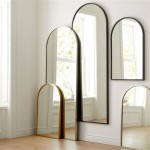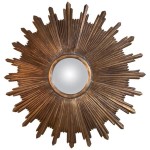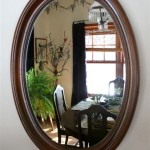Gluing Wood Frames to Bathroom Mirrors: A Guide to Durable Adhesion
Adding a wood frame to a bathroom mirror can elevate its aesthetic appeal and complement the overall décor. Whether it’s a simple, modern frame or a more elaborate, ornate design, the process of attaching the frame requires careful consideration to ensure a durable and long-lasting bond. Bathroom environments, characterized by high humidity, fluctuating temperatures, and potential exposure to moisture, present unique challenges for adhesive applications.
This guide explores the key aspects of gluing wood frames to bathroom mirrors, providing insights into suitable adhesives, preparation techniques, and best practices for achieving a professional and lasting result.
Choosing the Right Adhesive
The foundation of a successful wood frame installation lies in selecting the appropriate adhesive. Traditional wood glues, while effective for many applications, may not withstand the rigors of a bathroom environment. Moisture and temperature fluctuations can compromise their bond strength over time. Therefore, it is crucial to choose a waterproof adhesive specifically designed for high-humidity environments.
Some recommended options include:
- Epoxy adhesives: These two-part adhesives are known for their exceptional strength and resistance to moisture. They offer a durable bond ideal for bathroom applications.
- Polyurethane construction adhesives: These adhesives are highly versatile and offer strong adhesion to a variety of surfaces, including wood and glass. They are also moisture-resistant and provide a flexible bond that can accommodate slight movement between the frame and mirror.
- Silicone adhesives: Silicone adhesives are known for their flexibility and water resistance, making them suitable for bathroom applications. However, it's important to choose a silicone that is designed for adhesion to both wood and glass, as some types may not offer sufficient bond strength.
When selecting an adhesive, it's essential to consider the specific materials of the frame and mirror. The adhesive's compatibility with these materials is crucial for a successful bond.
Preparation for a Strong Bond
Proper preparation is paramount for a durable and aesthetically pleasing frame installation. This involves cleaning, sanding, and aligning the surfaces for optimal adhesive adhesion.
Here are the key steps:
- Clean the surfaces: Thoroughly clean both the mirror surface and the back of the wood frame with a mild detergent and water. Ensure both surfaces are free of dust, debris, and any residue that could hinder adhesion.
- Sand the frame: If the frame is unfinished or has a rough surface, sanding it with fine-grit sandpaper will create a smoother surface and promote better adhesive contact.
- Align the frame: Position the frame on the mirror, ensuring it is level and centered. Use painter's tape to temporarily secure the frame in place. This will prevent shifting during the glue application.
By meticulously cleaning and sanding the surfaces, you ensure a strong, lasting bond between the frame and the mirror. Precise alignment during the preparation phase will contribute to a professional and aesthetically pleasing result.
Application and Curing Time
Once the surfaces are prepared, apply the adhesive according to the manufacturer's instructions. Typically, you will apply a bead of adhesive along the edges of the frame, ensuring a consistent flow.
Key considerations for adhesive application:
- Applying the adhesive: Use a caulking gun to apply the adhesive in a thin, continuous bead around the back of the frame. Avoid applying too much adhesive, as this can cause excess squeeze-out and make clean-up difficult.
- Pressing the frame: Carefully press the frame against the mirror, ensuring it's level and centered. Maintain pressure for a few minutes to ensure good contact between the two surfaces.
- Curing time: Allow the adhesive to cure fully according to the manufacturer's instructions. This may range from a few hours to a day or more, depending on the type of adhesive used.
Once the adhesive has fully cured, the frame should be securely attached to the mirror and ready for use.

Mirror Frame Diy How To Update A Basic Bathroom Our Faux Farmhouse

Mirror Frame Diy How To Update A Basic Bathroom Our Faux Farmhouse

Diy Bathroom Mirror Frame Without Removing Clips Her Happy Home

How To Build A Wood Frame Around Bathroom Mirror Young House Love

Diy Stick On Mirror Frame Sawdust Sisters

Framing A Bathroom Mirror Tempting Thyme

Mirror Frame Diy How To Update A Basic Bathroom Our Faux Farmhouse

How To Frame A Mirror

How To Make A Diy Bathroom Mirror Frame Thediyplan

Diy Framed Bathroom Mirrors Living With Lady








